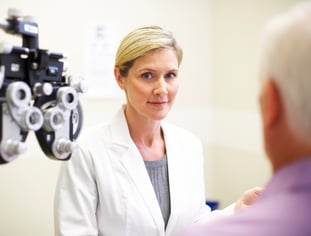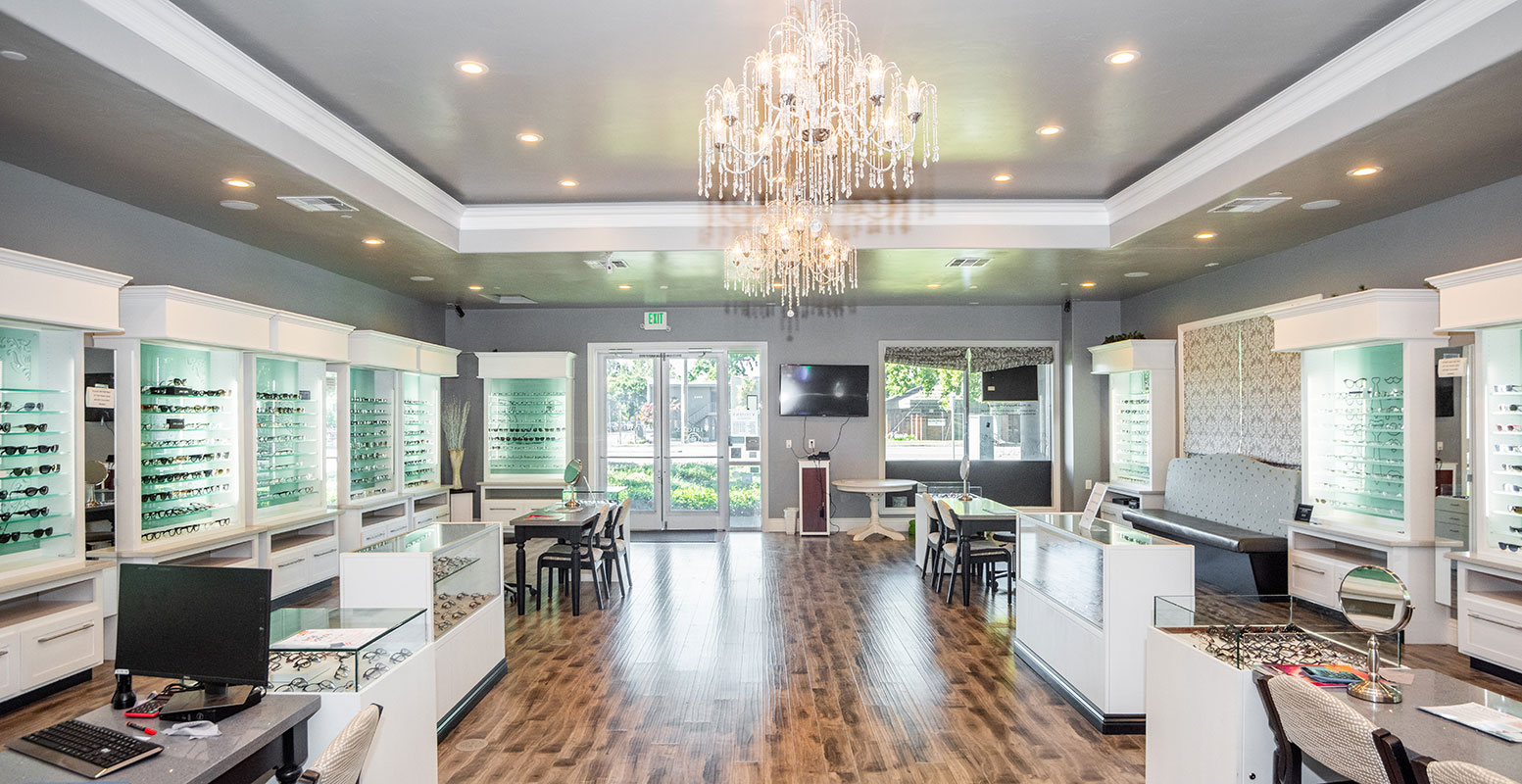Discovering the Most Current Technical Innovations in Optometry and What They Mean for Optometrists
In the ever-evolving area of optometry, current technological advancements are improving exactly how experts approach eye care. From the precision of Optical Comprehensibility Tomography to the nuanced insights offered by AI-driven diagnostic tools, these developments are establishing brand-new requirements in person analysis and treatment. Teleoptometry is positioned to redefine availability, making sure that know-how transcends geographical limitations. As these improvements penetrate the practice, optometrists are faced with the challenge of accepting these devices to improve patient results. The inquiry continues to be: how will these technological shifts redefine the roles and duties within the career?
Advancements in Diagnostic Tools
Advancing the area of optometry, technologies in diagnostic tools have actually transformed the way eye treatment professionals analyze and detect aesthetic disabilities and eye problems. The previous years has witnessed significant technological developments, making it possible for more comprehensive and accurate assessments. Optical Comprehensibility Tomography (OCT), for instance, offers high-resolution cross-sectional pictures of the retina, permitting the early discovery of diseases such as glaucoma and age-related macular degeneration. This non-invasive imaging strategy has come to be crucial in modern optometric method.
One more secret advancement is the introduction of sophisticated corneal topography systems, which map the surface curvature of the cornea with accuracy. These devices are especially helpful for suitable call lenses and detecting corneal conditions. Furthermore, digital retinal imaging has transformed standard ophthalmoscopy, using thorough, panoramic sights of the retina that help with thorough aesthetic assessments.
The development of wavefront aberrometry has actually likewise been vital, enabling the evaluation of refractive mistakes with unparalleled accuracy (Optometrist Chino). This innovation assists in tailoring rehabilitative lenses and boosting medical outcomes for refractive surgical procedures. Jointly, these analysis improvements encourage optometrists to supply superior person care, ensuring very early treatment and tailored treatment strategies, inevitably improving visual wellness outcomes
AI in Person Administration
Building on the structure of cutting-edge diagnostic tools, the incorporation of synthetic intelligence (AI) in patient administration stands for a transformative jump for optometry. AI systems are progressively employed to improve effectiveness, precision, and customization in patient care.
Additionally, AI-driven platforms facilitate streamlined patient interactions and administrative procedures. Automated organizing, online assessments, and customized follow-up strategies not just boost person fulfillment yet also optimize time management for professionals. These systems can triage individuals based upon the urgency of their conditions, making certain that those in vital demand receive prompt interest.
Moreover, AI boosts decision-making by giving eye doctors with evidence-based suggestions and therapy paths. By integrating information from digital wellness records, AI tools offer insights that notify medical decisions, decreasing the danger of mistakes and boosting client results. As AI continues to evolve, its role in person administration will likely increase, reshaping the landscape of optometric care.
Breakthroughs in Retinal Imaging
In the realm of optometry, retinal imaging has experienced amazing technical improvements that are improving analysis capabilities and individual treatment. Developments such as Optical Coherence Tomography (OCT) and fundus digital photography have actually changed how eye doctors imagine and assess the retina. OCT, in certain, provides high-resolution, cross-sectional pictures of the retina, permitting for the in-depth assessment of its layers. This capability is indispensable for very early detection and administration of conditions like glaucoma, diabetic retinopathy, and age-related macular deterioration.
Enhanced imaging methods like OCT angiography are further refining diagnostic precision. This non-invasive method maps blood circulation in the retina, offering crucial insights right into vascular wellness without the need for color shots. Furthermore, adaptive optics technology is being incorporated their website right into retinal imaging systems to remedy ocular aberrations, supplying extraordinary photo clearness. Such advancements facilitate the identification of minute retinal modifications that can symbolize disease development.
Furthermore, advancements in expert system are enhancing retinal imaging by enabling automatic analysis of large datasets. These systems assist optometrists in identifying patterns a sign of pathology, thus enhancing diagnostic precision and effectiveness. Jointly, these technologies are changing retinal imaging right into a foundation of modern eye care, enhancing end results and increasing therapeutic possibilities.
Teleoptometry's Expanding Duty
Teleoptometry is progressively becoming an important component of eye treatment, driven by improvements in data and analysis devices. As optometry accepts digital makeover, teleoptometry promotes remote consultations, enabling optometrists to expand their services past standard borders. This is especially helpful in underserved and country areas where access to specialized eye care is usually minimal. By leveraging high-resolution video conferencing and advanced retinal imaging, optometrists can conduct detailed eye exams from afar, making certain prompt medical diagnosis and treatment.
The combination of synthetic knowledge (AI) more improves teleoptometry, enabling the evaluation of aesthetic data and helping in the discovery of ocular problems such as glaucoma and diabetic retinopathy. AI-powered formulas can rapidly interpret complicated imaging data, giving optometrists moved here with valuable understandings that bolster professional decision-making.
Moreover, teleoptometry sustains connection of treatment with seamless assimilation with digital wellness records (EHRs), enabling eye doctors to keep extensive individual backgrounds. When consulting with various practitioners., this guarantees that individuals obtain consistent and individualized treatment also.
In spite of these benefits, challenges remain, including making sure data protection and taking care of individual assumptions. Nonetheless, teleoptometry stands for a substantial stride towards more available, reliable, and patient-centered eye care. As technology progresses, its duty is poised to increase even more.

Future Trends in Eye Care
A myriad of cutting-edge fads is readied to improve the future of eye treatment, driven by technical advancements and the developing requirements of people. One significant trend is the integration of fabricated knowledge (AI) in diagnostics, which guarantees to improve the accuracy and efficiency of eye exams. AI formulas can analyze large quantities of information from retinal photos, potentially identifying problems like diabetic person retinopathy and glaucoma earlier than typical techniques.
Furthermore, personalized medication is gaining traction in optometry, with genetic screening educating tailored therapy plans. This approach aims to maximize person results by customizing treatments to individual genetic profiles. Wearable innovation, such as wise contact lenses, is likewise on the perspective, supplying real-time monitoring of intraocular stress or glucose degrees, thus check it out offering continuous insights right into systemic and eye health.
The fostering of increased reality (AR) and virtual fact (VR) in training and individual education is an additional emerging fad. These innovations use immersive experiences that can boost understanding and abilities both for individuals and eye doctors. As these patterns evolve, optometrists must remain abreast of technological advancements to provide innovative treatment, making sure improved person end results and fulfillment in the vibrant landscape of eye treatment.
Verdict

Collectively, these diagnostic improvements empower eye doctors to provide exceptional individual treatment, ensuring early treatment and customized therapy techniques, inevitably improving visual wellness end results.

As these innovations continue to progress, eye doctors should adapt and integrate them into technique, inevitably enhancing process efficiency and boosting the requirement of eye care delivered to individuals.